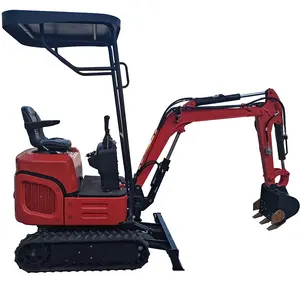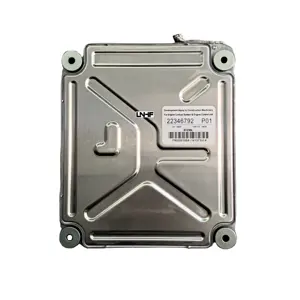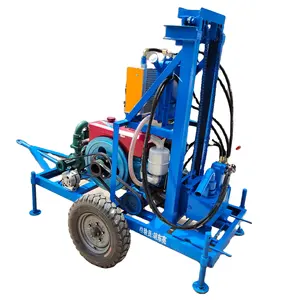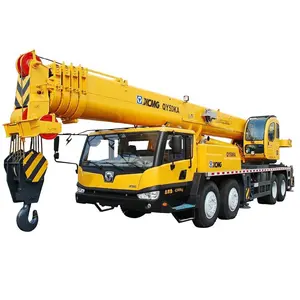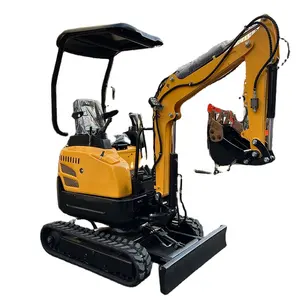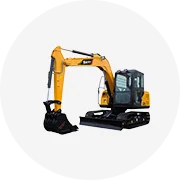Popular en tu industria






Tci Tricone Drill Bit 3 7/8 Inch IADC 537 Broca de perforación de pozos de agua
EUR 278.43 - EUR 371.24
Pedido mínimo: 1 conjunto
Envío por pieza: EUR 25.94







Fábrica de brocas tricónicas 6 1/2 pulgadas IADC 537 TCI broca tricónicas para Rocas
EUR 464.05
Pedido mínimo: 1 conjunto
Envío por pieza: EUR 97.12







Broca tricónica Broca de diamante de 1mm Carburo para metal
EUR 278.43 - EUR 371.24
Pedido mínimo: 1 conjunto
Envío por pieza: EUR 25.94







Brocas tricono TCI de 6 pulgadas, para perforación de roca, DTH
EUR 440.85
Pedido mínimo: 1 conjunto
Envío por pieza: EUR 97.12







De 6 3/4 "a 14 3/4" pulgadas Tricone Bit Cutter Tricone Drill Bit Precio Tricone Bit
EUR 491.89 - EUR 519.73
Pedido mínimo: 1 pieza
Envío por pieza: EUR 126.26






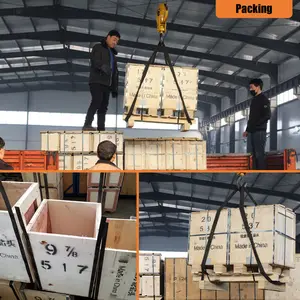
ISO9001 broca tricono TCI calificada 6 1/2 ''para perforación de pozos de agua
Listo para enviar
EUR 649.67 - EUR 696.07
Pedido mínimo: 1 pieza
Envío por pieza: EUR 138.33






Broca de tricono, alta calidad, precio bajo, 17 1/2 Tci
EUR 3,433.93 - EUR 3,712.36
Pedido mínimo: 1 pieza






Roschen-broca De tricono para perforación De agua, herramienta De perforación De agua De 22 Pulgadas, 45 Pulgadas, 6, 34, Tci
Listo para enviar
EUR 221.82 - EUR 234.81
Pedido mínimo: 1 pieza
Envío por pieza: EUR 47.53






El mejor precio de fábrica de 6 "TCI Tricone bit Three Cone Rock Roller Drill Bit para plataforma petrolera y pozo de agua
EUR 510.45
Pedido mínimo: 1 pieza
Envío por pieza: EUR 85.89






ZX Herramientas de perforación de pozos de agua TRICONE bit 6 1/2 "TCI TRICONE Rock bit/TCI TRICONE IADC 527
Listo para enviar
EUR 556.86 - EUR 575.42
Pedido mínimo: 1 pieza
Envío por pieza: EUR 144.13






Broca tricónica para agua Broca de rodillo TCI TRICONE broca de botón de tres conos 5 7/8 "6 1/2" 7 1/2"
EUR 3,248.32
Pedido mínimo: 1 pieza
Envío por pieza: EUR 148.32
Búsquedas Relacionadas:






API 6 pulgadas IADC635 Tci Tricone Three Cone Rock Roller Broca para minería
EUR 927.17 - EUR 1,205.59
Pedido mínimo: 1 pieza






IADC 537 TCI Brocas tricónicas 6 3/4 \ "Broca rotativa para herramientas de perforación TCI Tricones para una penetración eficiente del pozo
EUR 491.89 - EUR 501.17
Pedido mínimo: 1 pieza
Envío por pieza: EUR 47.53






Tci Tricone Bit 6 1/2 "pulgadas IADC 537 165,1mm Piezas de maquinaria de construcción Broca de perforación de pozos de agua
EUR 491.89 - EUR 501.17
Pedido mínimo: 1 pieza
Envío por pieza: EUR 46.11






Tci-broca de rodillo de roca de tres cono, tricono para equipo de aceite y minería
EUR 231.10 - EUR 463.12
Pedido mínimo: 1 pieza






Poco tricone 6 1/2 17 1/2 pulgadas de agua de perforación tricone poco Roller cone bit 8 1/2 pulgadas
EUR 278.43
Pedido mínimo: 1 pieza






IADC517-rodillos de perforación de pozo para rodamientos, 537, 637, 6, 1/2 ", tci, tricono
EUR 556.86
Pedido mínimo: 1 pieza






Cabezal de taladro de tres puntas cónicas, carburo de tungsteno, tricono, 6 1/2 tci
EUR 371.24 - EUR 556.86
Pedido mínimo: 1 pieza






Broca de tricono, broca de rodillo, broca de roca, 6, 1/2, 165,1mm, 12, 1/4
EUR 278.43
Pedido mínimo: 1 pieza






Brocas de tricono de acero, 6/1/2 pulgadas, 152mm
EUR 278.43 - EUR 556.86
Pedido mínimo: 1 pieza
Envío por pieza: EUR 126.71




TCI-broca de taladro para perforación de pozos de agua, broca de tres puntas, 14, 3/4 pulgadas (374,6mm), IADC517G
EUR 5,661.35
Pedido mínimo: 1 pieza
Envío por pieza: EUR 139.77






Broca tricónica para pozos de aceite de 6 pulgadas Rodamiento sellado Broca de rodillo tricónico TCI
EUR 974.50 - EUR 1,067.31
Pedido mínimo: 1 pieza









Tricone rock poco tci tricone poco 12 1/4 ''tricone broca
EUR 2,134.61 - EUR 2,320.23
Pedido mínimo: 1 pieza






TCI-Rodillo rotativo de carburo de tungsteno, broca tricono 9, 7/8 '', API IADC537, para perforación de pozos HDD
EUR 603.26 - EUR 649.67
Pedido mínimo: 1 pieza
Envío por pieza: EUR 180.17






D Miningwell-broca de tres cono para agua, aceite, gas y pozo, tci, tricono, 7 1/2
EUR 788.88 - EUR 1,020.90
Pedido mínimo: 1 pieza






Tci-broca de rodillo de roca de tres cono, tricono para equipo de aceite y minería
EUR 1,809.78
Pedido mínimo: 1 pieza






Broca tricónica con rodamiento de sello de Metal, broca tricónica de roca para perforación de pozos de agua, broca tricónica de rodillo de roca de tres conos Tci para O
EUR 509.53 - EUR 510.45
Pedido mínimo: 1 pieza






Lockheed 10 1/2 pulgadas poco Tricone tres cono rodillo Rock broca para plataforma de petróleo y minería
Listo para enviar
EUR 1,113.71 - EUR 1,484.95
Pedido mínimo: 1 pieza
Envío por pieza: EUR 146.49






Alta calidad 100% nueva broca Hot Cone Bit Tricone Tci Tricone Bit
EUR 930.81 - EUR 968.81
Pedido mínimo: 1 pieza






Rock escariador montado TCI TRICONE bits roca perforación bits minería
Listo para enviar
EUR 835.29 - EUR 1,299.33
Pedido mínimo: 1 pieza
Envío por pieza: EUR 151.15






Tci-broca de rodillo de roca de tres cono, tricono para equipo de aceite y minería
EUR 204.18 - EUR 547.58
Pedido mínimo: 1 conjunto






Broca de tricono para perforación de pozos de agua, 100%, 12, 537, nuevo, 1/4
EUR 2,227.42 - EUR 2,784.27
Pedido mínimo: 1 pieza






Brocas de caucho de aceite con boquillas de chorro central para perforación de formación dura, tricono 17, 1/2 pulgadas, 537 TCI
EUR 2,691.46 - EUR 2,784.27
Pedido mínimo: 1 pieza



IADC742-brocas de cono de 9-7/8 pulgadas para perforar mina abierta, brocas de carburo de tungsteno, TCI, broca tricono
EUR 1,112.78 - EUR 1,298.40
Pedido mínimo: 1 pieza






Brocas de tricono para perforación, brocas Mini de 9 1/2 ", envío rápido
EUR 139.22 - EUR 575.42
Pedido mínimo: 1 pieza
Envío por pieza: EUR 146.49






Brocas de rodillo OEM TCI Tricone, tres conos, para perforación de roca, para equipo de perforación de aceite
EUR 7.48
Pedido mínimo: 100 piezas






Broca tricónica TCI 11 5/8 "broca tricónica para roca dura
EUR 593.98 - EUR 603.26
Pedido mínimo: 1 conjunto
Envío por pieza: EUR 21.76






6 1/2 TCI Three Cone Bit Oil Rig Drill Head/carburo de tungsteno Tricone
EUR 185.62 - EUR 1,856.18
Pedido mínimo: 1 pieza
Categorías principales
Sobre tci tricon bit 6
Encuentra duradera y de mejor calidad. tci tricon bit 6 a precios asequibles solo en alibaba.com. Para mejorar la eficiencia y la calidad de la cementación. tci tricon bit 6 son piezas de equipo vitales, por lo que no debe comprometer su calidad. Selle la carcasa a la pared por completo, y todo el trabajo no tuvo éxito si la carcasa toca el agujero en cualquier parte.
En Alibaba.com, puede encontrar una amplia gama de. tci tricon bit 6 , que es un elemento clave para garantizar que la calidad de cementación sea óptima. Lo hace deteniendo la entrada de lodo y el aislamiento de zonas de calidad inferior. Básicamente, hay cuatro tamaños dependiendo de sus formas. El resorte de arco es más adecuado para pozos verticales y, debido a su flexibilidad, puede pasar por agujeros estrechos. Los tipos rígidos se hacen con barras de hierro fundido o acero, lo que significa que son perfectos para un tamaño específico.
Los tipos semirrígidos combinan la propiedad de los resortes de arco y los tipos rígidos. Se pueden comprimir como los resortes de arco mientras tienen altas fuerzas de restauración como los tipos rígidos. Las palas de moho están hechas con fibra de carbono y materiales cerámicos y se pueden aplicar fácilmente a la superficie de la carcasa. Restaurar la fuerza es un criterio importante que decide qué tan efectivo a. tci tricon bit 6 va a ser.
En Alibaba.com, puede obtener la solución a todas sus necesidades en un solo lugar de manera fácil y rápida. Todos. tci tricon bit 6 son vendidos por vendedores, fabricantes y proveedores verificados, lo que asegura que siempre obtenga la máxima satisfacción.
En Alibaba.com, puede encontrar una amplia gama de. tci tricon bit 6 , que es un elemento clave para garantizar que la calidad de cementación sea óptima. Lo hace deteniendo la entrada de lodo y el aislamiento de zonas de calidad inferior. Básicamente, hay cuatro tamaños dependiendo de sus formas. El resorte de arco es más adecuado para pozos verticales y, debido a su flexibilidad, puede pasar por agujeros estrechos. Los tipos rígidos se hacen con barras de hierro fundido o acero, lo que significa que son perfectos para un tamaño específico.
Los tipos semirrígidos combinan la propiedad de los resortes de arco y los tipos rígidos. Se pueden comprimir como los resortes de arco mientras tienen altas fuerzas de restauración como los tipos rígidos. Las palas de moho están hechas con fibra de carbono y materiales cerámicos y se pueden aplicar fácilmente a la superficie de la carcasa. Restaurar la fuerza es un criterio importante que decide qué tan efectivo a. tci tricon bit 6 va a ser.
En Alibaba.com, puede obtener la solución a todas sus necesidades en un solo lugar de manera fácil y rápida. Todos. tci tricon bit 6 son vendidos por vendedores, fabricantes y proveedores verificados, lo que asegura que siempre obtenga la máxima satisfacción.

